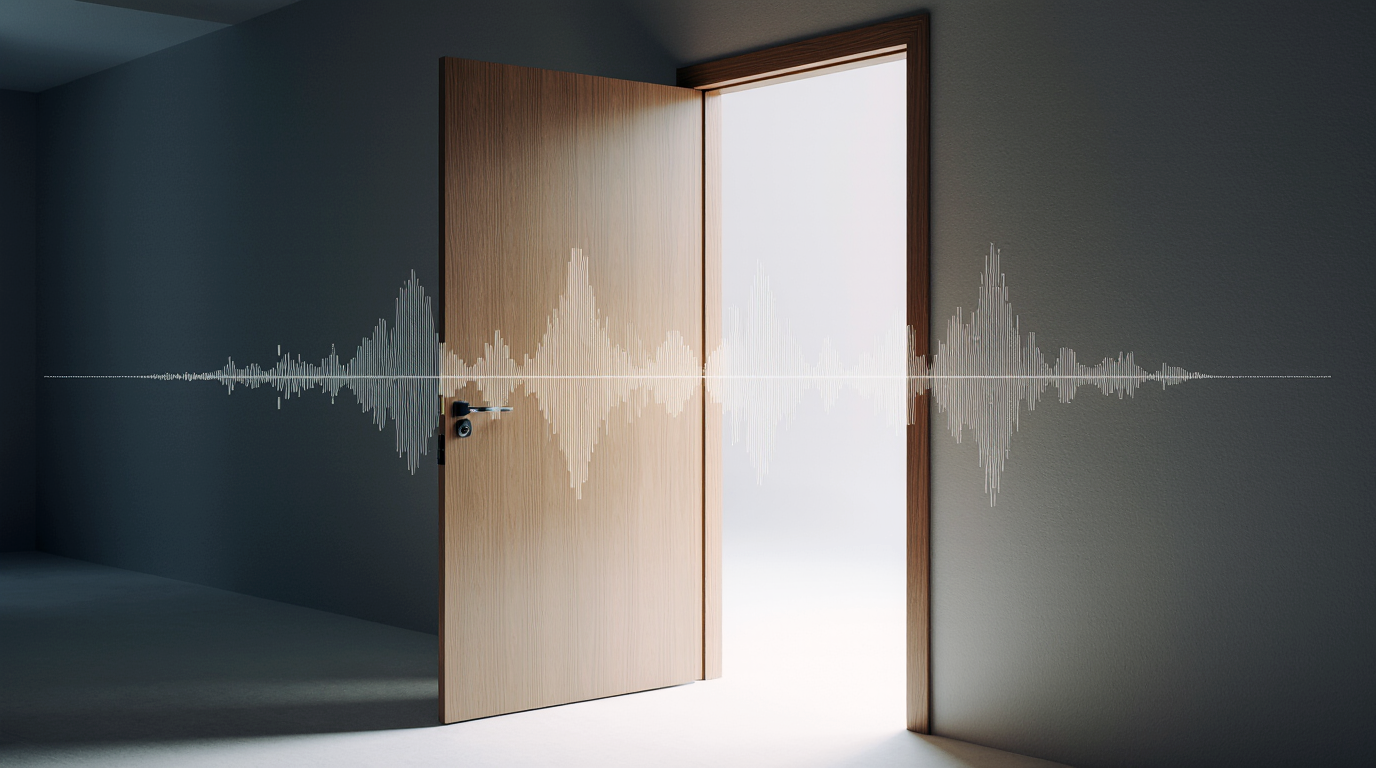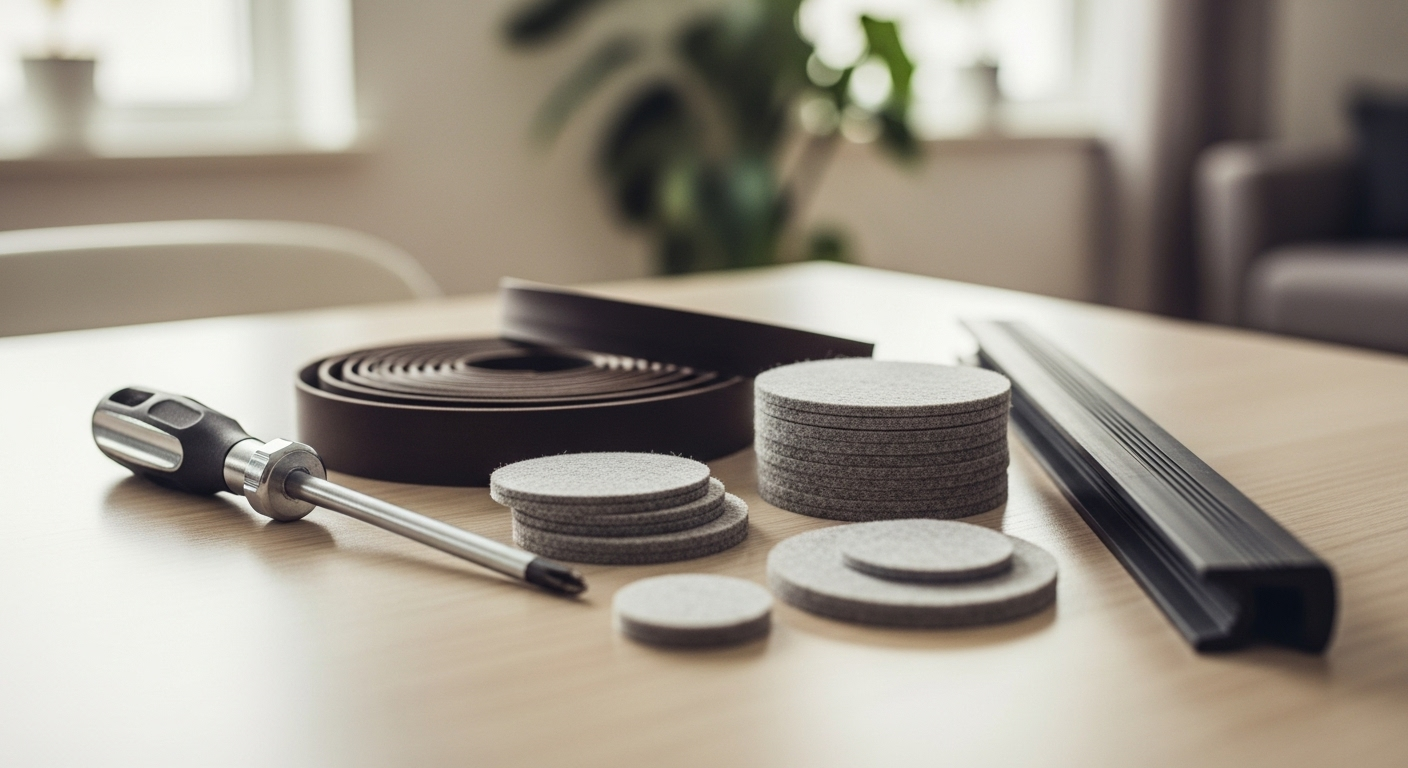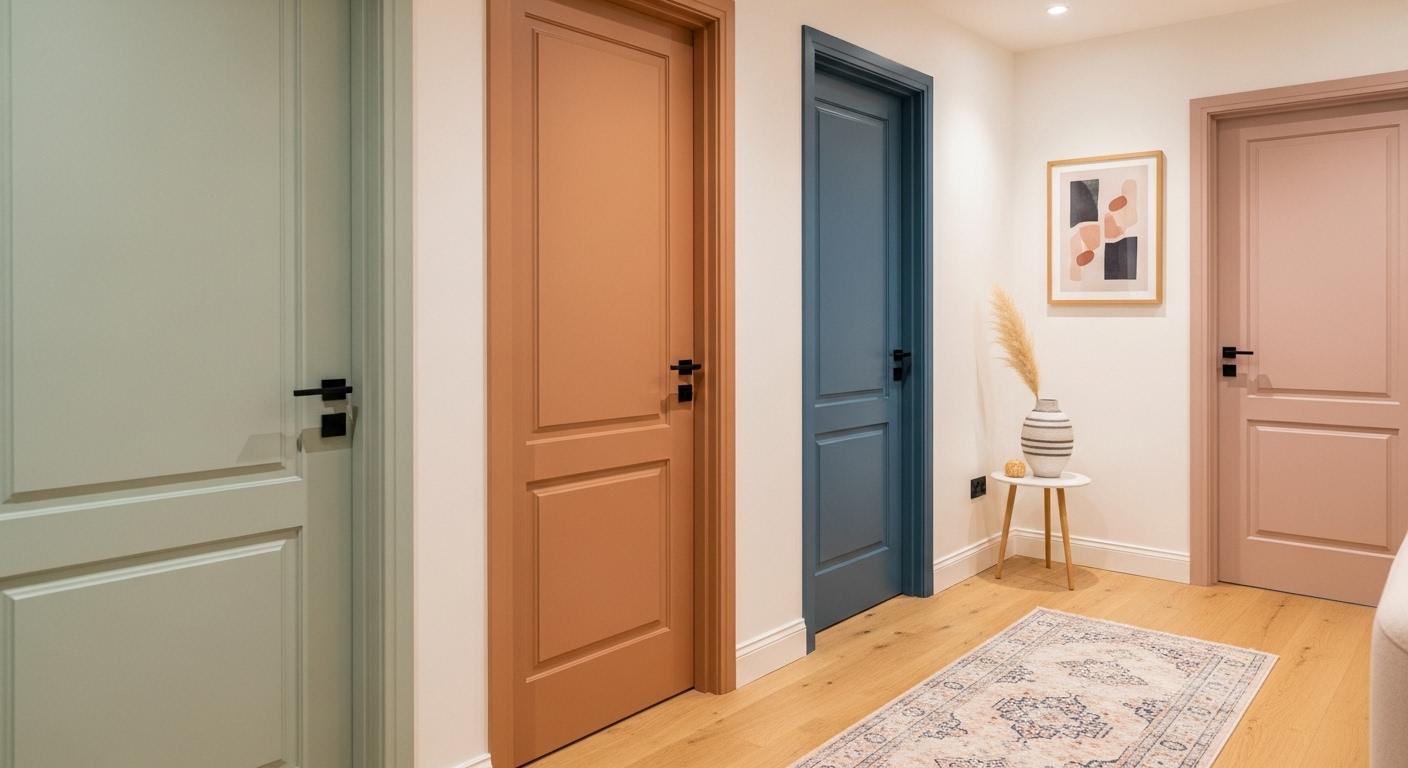
Few things ruin peace and quiet like a slamming door. Whether it’s your bedroom, office, or entryway, that sharp thud can travel through the entire house. The good news? You don’t have to replace your doors to fix it. At Sound Pro Solutions, we’ve helped thousands of homeowners and businesses create calm, sound-controlled environments — and that includes teaching people how to make doors quieter when closing.
With a few smart adjustments and the right materials, you can dramatically reduce that harsh noise, eliminate rattles, and block sound leaks around the frame. Let’s walk through what actually causes those noisy doors — and how to silence them for good.
Why Your Doors Are So Loud in the First Place
Before you grab a screwdriver or soundproofing tape, it’s worth understanding why your door is making noise. Most of the time, it’s not one single issue but a combination of small ones: gaps, vibrations, hard impacts, or worn-out hardware. Identifying the root cause makes your fix more effective — and often, much cheaper.
The Gap at the Bottom Creates Noise and Drafts
Take a look at the space beneath your door. That small gap might not seem like a big deal, but acoustically, it’s an open highway for sound. Air gaps allow sound waves to move freely between rooms, which is why even a solid door can let noise through if it’s not sealed properly.
This is where a door sound blocker or a sweep comes into play. By sealing the bottom, you not only stop sound but also block drafts and dust. It’s one of the easiest and most effective upgrades you can make if you’re serious about soundproofing a door.
Installing a sweep or an under-door seal can instantly make your door feel heavier and quieter when it shuts. And since it’s an external solution, you can do it yourself in minutes — no carpentry skills needed.
Hard Surfaces Amplify Every Slam and Click
Doors that close against hard frames without cushioning create impact noise. Every slam transfers vibration into the surrounding wall, acting almost like a drum. In homes with hardwood floors or tile, the sound can echo even more.
Adding a soft buffer between the door and the frame, such as felt pads or silicone bumpers, reduces the “clack” sound. It’s a small change, but it works wonders. If you’ve ever wondered how to make doors close quieter, start here. The difference is immediate, and it feels smoother every time the door latches.
Loose Hardware Makes Doors Rattle
If your door rattles before it fully closes, the problem might not be the structure itself — it’s usually the hardware. Over time, hinges loosen, screws back out, and latches stop aligning perfectly. Each tiny vibration adds up, creating that irritating rattle every time someone passes through.
A few turns of a screwdriver often solve this. But if tightening alone doesn’t help, inspect the strike plate and latch. Sometimes, a simple adjustment in alignment can make the latch catch more firmly, reducing unwanted vibration and keeping the door quiet.
Quick Fixes You Can Try Right Now

You don’t always need specialized tools or materials to make a quiet door. Many fixes are quick, affordable, and take less than 10 minutes. The key is knowing where to start.
We recommend beginning with small mechanical adjustments before moving on to more advanced soundproofing and door solutions. Here’s what works best in most homes and offices.
Adjust the Door Closer
If your door has a hydraulic closer, it may simply be shutting too fast or with too much force. Most closers have adjustment screws that control both speed and pressure. Turn them slightly clockwise to slow the motion, test the door, and fine-tune until it closes smoothly without slamming.
This is especially useful for door quiet-close situations in offices or commercial spaces where doors automatically shut behind people. A few careful tweaks can make the closing motion whisper-quiet while keeping security intact.
Tighten All Hinges and Hardware
A quiet door starts with solid hardware. Loose hinges create friction and small movements that amplify sound. Grab a screwdriver and check every hinge screw — especially those at the top and middle. Tighten them gently but firmly.
If you hear creaks or grinding, add a drop of household lubricant to the hinge pins. That small step reduces metal-on-metal contact and helps the door move silently. Don’t forget to inspect the doorknob and latch mechanism too; these parts can also rattle and contribute to noise.
Once you’ve eliminated looseness, your door should already feel sturdier and more stable. It’s the kind of subtle improvement that makes your home feel calmer without anyone noticing the change.
Apply Felt Pads to Door Stops
If your door closes against a solid wood or metal stop, every closure produces a sharp impact. A few self-adhesive felt pads placed strategically on the frame can make an enormous difference. These pads act as a buffer, absorbing energy and softening the sound when the latch hits.
It’s one of the easiest answers to how to quiet door closing — fast, cheap, and totally reversible. You can even choose clear silicone pads if you prefer a nearly invisible look. For heavier doors, thicker bumpers work best and hold up longer over time.
How to Soundproof the Bottom of Door
Once you’ve addressed rattles and slamming noises, the next step is preventing sound from escaping through gaps — especially at the bottom. Most interior doors have a clearance of half an inch to an inch between the door and the floor. That’s enough for sound to leak freely.
The soundproof bottom of the door upgrade is simple: install a quality door sweep or an acoustic threshold seal. Sweeps are flexible strips that attach to the door itself, sealing the gap as it closes. For premium sound control, look for sweeps made from silicone or dense rubber with an aluminum mounting plate.
Threshold seals, on the other hand, mount directly to the floor. They form a tight compression seal when the door closes, completely blocking sound and airflow. When paired together — sweep plus threshold — they create an acoustic seal that’s almost as effective as professional door sound blocker systems used in recording studios.
And yes, you’ll feel the difference immediately. Quieter rooms, better temperature control, and a more polished finish overall.
The Best Way to Soundproof a Door Frame
Even after sealing the bottom of a door, a surprising amount of noise still sneaks through the sides and top. That’s because most door frames are never fully airtight. Sound travels wherever air can move — and that means the perimeter of the frame is just as important as the door itself.
The best way to soundproof a door is to create a continuous seal around the entire frame. Think of it as closing the last few leaks in a boat. Once those gaps are gone, the difference is dramatic — especially for bedrooms, offices, and studios where privacy and focus matter.
Adding Weatherstripping Around the Entire Frame
Weatherstripping isn’t just for keeping out drafts. It’s a highly effective acoustic seal as well. When installed properly, it compresses every time the door closes, blocking both sound and air.
For most projects, adhesive-backed rubber or silicone weatherstripping works perfectly. It’s flexible, affordable, and easy to apply — even if you’ve never done it before. Just clean the frame, measure each section, and press the strip firmly into place.
When you shut the door, you should feel a gentle resistance. That’s how you know the seal is working. Combine this with a sweep at the bottom, and you’ve built a full acoustic perimeter. It’s one of the simplest and most reliable solutions for how to make a door soundproof without replacing it.
If you want a premium finish, look for magnetic weatherstripping kits — the same kind used in sound-rated doors. They form an even tighter seal and last for years with zero maintenance.
Making Interior Doors Close Quieter Throughout Your Home

Noise travels easily between rooms, especially when you have multiple lightweight interior doors. Every slam or creak can echo down a hallway or wake someone in the next room. Once you fix one door, you’ll start noticing how the others sound, too.
The good news is that all the techniques we’ve covered — tightening hardware, adding felt pads, using sweeps, and installing weatherstripping — apply to every door in your home. By repeating these small upgrades, you can make every interior door a quiet door, creating a much calmer atmosphere overall.
For bedrooms and nurseries, focus on sealing gaps and softening impacts. In offices or studios, add denser materials for extra sound isolation. You don’t need to do it all at once; even gradual improvements will noticeably reduce noise transfer.
Sometimes we recommend layering acoustic foam on the wall behind the door or using decorative sound panels nearby. That helps absorb reflected sound and complements the work you’ve already done on the door itself.
Soundproofing Entry and Exterior Doors
Exterior doors come with their own set of challenges. Traffic noise, wind, and outside conversations can all find their way in through weak seals or hollow cores. If your entryway door rattles or whistles when it closes, it’s a sign that both the seals and insulation could use attention.
Start by checking the threshold and weatherstripping. If they’re old or cracked, replace them immediately. A tight compression seal can make a world of difference. For added isolation, use a solid-core door or install a secondary storm door to create an air buffer — one of the best ways to soundproof a door facing the street.
At Sound Pro Solutions, we also recommend acoustic door bottoms or automatic drop seals for exterior use. These create a mechanical seal that activates when the door closes, completely blocking out noise and drafts.
If you live in a busy area, you might even add a door sound blocker curtain — a thick, weighted fabric panel that hangs over the door when not in use. It’s a simple, renter-friendly solution that pairs well with permanent seals.
Products We Recommend Based on Decades of Experience
For over a decade, we’ve been helping people design quieter spaces — from recording studios and home offices to apartments and classrooms. Along the way, we’ve tested hundreds of materials, so when we recommend a product, it’s because it truly works.
Here are a few of our go-to items for reducing door noise effectively and affordably:
- Door Seals and Sweeps – Perfect for closing the gap at the bottom and sides. Available in silicone, aluminum, and hybrid models.
- Weatherstripping Kits – Flexible, self-adhesive options that make a big acoustic difference for any door type.
- Acoustic Panels – Great for treating the surrounding wall area and absorbing reflected sound energy.
- Mass Loaded Vinyl (MLV) – The ultimate soundproof barrier for serious projects, especially when paired with rockwool insulation.
Each product comes backed by Sound Pro Solutions’ commitment to quality. We offer fast nationwide shipping, clear return policies, and customer support that actually helps — not canned responses.
If you’re ready to take control of the noise in your home or workspace, explore our full line of door soundproofing materials on soundprosolutions.com.
Quiet starts with the right materials, and we’re here to make sure you get exactly what you need for lasting results.
Recent posts




